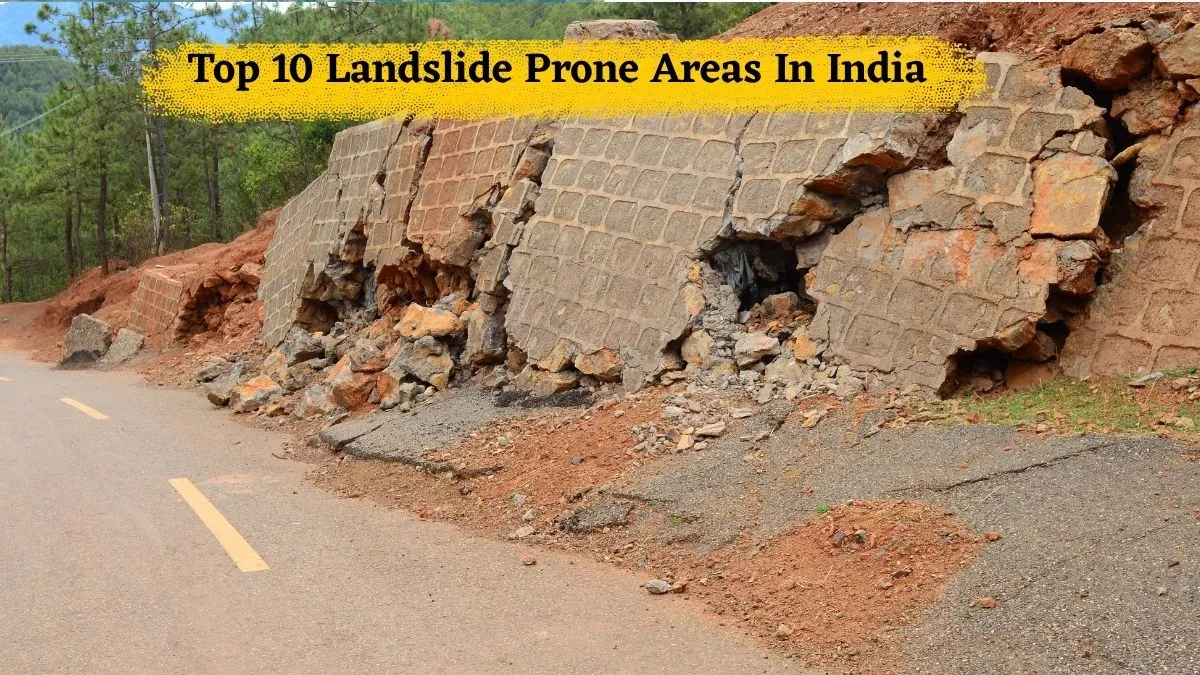- By Aditi Priya Singh
- Thu, 17 Jul 2025 04:49 PM (IST)
- Source:JND
Top 10 Most Affected Landslide-Prone Areas In India: In India, landslides are among the most frequent natural calamities, particularly during the monsoon season. Heavy rainfall, unstable soil, and steep slopes cause landslides in numerous areas each year, damaging homes, highways, and occasionally even taking lives. These accidents typically occur in mountainous and hilly regions where rain, deforestation, and construction activity cause the earth to become unstable.
The Western Ghats and the Northeastern hills are two of India's most vulnerable regions to landslides. Because of their gentle hill slopes and abundant rainfall, Northeastern states like Sikkim, Arunachal Pradesh, Manipur, and Nagaland frequently suffer landslides. Similar issues are faced by Tamil Nadu, Kerala, Karnataka, and Maharashtra in the south and west, particularly in the Western Ghats region. Because of its delicate topography, the Himalayan belt, which includes portions of Uttarakhand, Himachal Pradesh, and Jammu and Kashmir, remains extremely vulnerable.
Top 10 Landslide-Prone Areas In India
These landslides severely harm the ecology and economy, in addition to isolating settlements and blocking roadways. Planning, building, and early warning systems can all be improved with an understanding of these hazard zones. Let's examine India's ten most frequently landslide-affected regions annually.
| Rank | State/Region | Total Landslides (2000–2025) |
|---|---|---|
| 1 | Mizoram | 12,385 |
| 2 | Uttarakhand | 11,219 |
| 3 | Tripura | 8,070 |
| 4 | Arunachal Pradesh | 7,689 |
| 5 | Jammu and Kashmir & Ladakh | 7,293 |
| 6 | Kerala | 6,039 |
| 7 | Manipur | 5,494 |
| 8 | Maharashtra | 5,112 |
| 9 | Meghalaya | 2,639 |
| 10 | Assam | 2,569 |
Source: Landslide Atlas of India
Reasons for Frequent Landslides In These Areas
1. Mizoram
As per Landslides Atlas of India, India's most prone state to landslides is Mizoram with highest number of landslides from year 2000 to now with, 8962 occurred in 2017 only. The state experiences a lot of rainfall during the monsoon season, steep hills, and loose soil. Buildings and roads are frequently constructed on shaky slopes, increasing the likelihood that they would collapse in the event of rain.
2. Uttarakhand
Located in the Himalayan area, Uttarakhand's terrain is naturally fragile, with more than 11,000 landslides from 2000. Frequent road development, deforestation, and high visitor traffic further erode the terrain. Landslides occur because the mountains are unable to contain the excess water during the monsoon.
3. Tripura
Tripura's hilly terrain and constant rains make landslides a common occurrence. Here, the rain causes the soil to become slick and spongy. The issue is exacerbated by unauthorised building and changes in land usage.
ALSO READ: Top 10 Flood-Affected States In India: Bihar, Assam, Uttar Pradesh And More
4. Arunachal Pradesh
Arunachal Pradesh receives very heavy rainfall and has a lot of forested hills. While forests help, landslides occur when slopes are cut for roads or buildings. Earthquakes and poor drainage systems also worsen the situation.
5. Jammu and Kashmir & Ladakh
These regions lie in the high Himalayas, where the land is dry but fragile. Sudden rain or snowmelt weakens the slopes. Also, road expansion and military activities increase landslide risks.
6. Kerala
Kerala’s Western Ghats face severe rainfall. When hills are cleared for farming or homes, the soil becomes unstable. Landslides have become common, especially in the Idukki and Wayanad districts.
7. Manipur
Manipur’s steep valleys and high rainfall make it prone to landslides. Human activities like deforestation and improper drainage systems make it worse. Roads are often blocked during the monsoon.
8. Maharashtra
In Maharashtra, especially in the Western Ghats and Konkan areas, landslides happen during intense rains. Unplanned construction and hill cutting in areas like Raigad and Pune increase the chances.
ALSO READ: List Of Top 10 Healthiest States In India By 2025: Odisha Leads The List
9. Meghalaya
Meghalaya gets some of the heaviest rainfall in the world. In places like Cherrapunji and Shillong, this constant rain loosens the soil and triggers landslides. Cutting down trees for development adds to the risk.
10. Assam
In Assam, landslides mostly affect the hilly regions such as Dima Hasao and Karbi Anglong. Monsoon rains and poor slope maintenance cause land to slip, damaging homes and roads.

